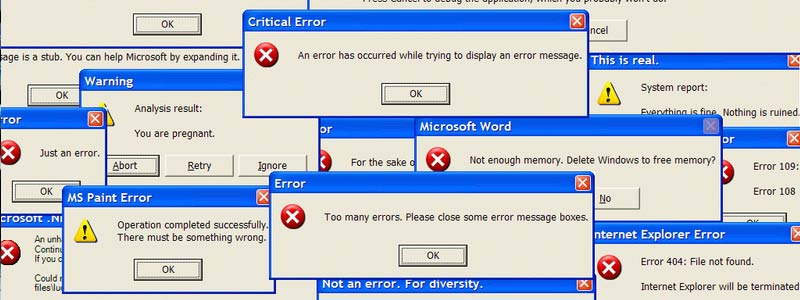
Mario P. Fucinari DC, CCSP, CPCO, MCS-P, MCS-I
Medicare recently released three clarifications on documentation requirements. Documentation is not only critical for proper reimbursement, but is also necessary for risk management and continuity of care. Even the cash patient must have proper documentation to decrease the risk of allegations of negligence or malpractice. Electronic health records (EHR) is an effective tool to provide accurate records in an efficient manner. While EHR is an effective tool, if misused, it could significantly increase our risk of recoupment, fines or jail time in an audit. In the following, I have noted the most common issues pertaining to electronic record keeping.
1. No chief complaint or history of present illness (HPI)
Evaluation and management documentation guidelines require that a chief complaint be clearly documented in order to establish medical necessity. Guidelines require that only the physician documents the HPI.
2. No review of systems
The review of systems provides a method to detect red flags. This is especially important to make sure that there are no contraindications to treatment. Without a review of systems, the examination automatically becomes a level one exam (99201/99211), which is known as the nurse’s code. A level one examination does not require the presence of the physician and is not really meant for physician use.
3. Information is automatically carried forward from visit to visit.
Software may be enabled to carry information forward from day to day. Examination findings and other information such as blood pressure, if carried forward, would indicate that it was done that day. This leads to inaccuracies in the record and may be considered fraud. Errors may also occur if a physician does not change a result that may have been positive at a previous visit, but is negative for the current visit.
4. Recording only the positive findings
Positive findings and negative findings have significant bearing on whether a diagnosis has been ruled in or ruled out. Remember the old adage, if it is not written down it never happened.
5. Only listing of the diagnosis each visit for the assessment
The assessment is the portion of the daily encounter that indicates the provider’s opinion and judgment of what is occurring in the case. Only listing the diagnosis each visit will not establish medical necessity.
6. Utilizing the same list of diagnoses for every patient
All of us physicians are guilty of having our favorite diagnoses list. Choosing from a select list of diagnoses or codes will limit our thinking. The history and examination must support each diagnosis. In addition, a diagnosis of lumbalgia or cervicalgia is not specific and should be avoided.
7. Documentation that lacks an assessment or an incomplete assessment
The assessment portion of the note indicates medical necessity. This is an area where the physician indicates how the patient is improving and the rationale for procedures. Two questions must be answered in each encounter; “How is the patient improved?” And “Why do they still need care?” The utilization of this information will provide the thought processes that were used in the evaluation of the patient’s progress.
8. Documentation does not support the level of manipulation
Often the physician will examine areas outside of the patient’s complaints. Preventive or wellness care is not a covered benefit under any insurance program. Wellness care to a specific region should never be billed to the carrier as an active treatment. If you are performing manipulation to 3-4 regions, then you should have findings and a diagnosis for all of the 3-4 regions.
9. Lack of audit and internal monitoring policies
Independent audits are tremendously important to any organizations compliance process. It is quite useful and a wise investment to employ a certified, independent auditor who is knowledgeable in documentation requirements for each carrier and what is the standard of care in our profession. An audit is your evidence of a good-faith effort to be compliant. Through the audit process, you can uncover and address documentation concerns with your electronic health record software, which will aid in developing policies or changes in your computer software to address deficiencies.
10. Lack of training in electronic health record requirements
All doctors and staff should be thoroughly trained on the requirements for electronic health records. Medicare, commercial carriers, our malpractice carriers, the ACA and state associations provide guidance on the meaningful use guidelines, clinical parameter guidelines and the standard of care for documentation. A team approach in clinical and billing guidelines will result in enhanced compliance for the office and peace of mind for all. Knowing the risks of electronic health records is the first step in improving your documentation and reducing your risk of audit.
Dr. Fucinari and ChiroHealthUSA will be presenting several webinars in the coming months to aid the doctor and staff in the implementation of documentation and billing guidelines. For an updated schedule of classes and locations, go to www.ChiroHealthUSA.com/webinars or www.AskMario.com. Dr. Fucinari is a Certified Medical Compliance Specialist and a Certified Medical Compliance Officer. Dr. Fucinari is the author of several books and other resources, including, the Compliance Program Manual for the Chiropractic Office, available at www.Askmario.com. For further information on compliance audits, books or record reviews, please contact Dr. Fucinari at Doc@Askmario.com.









 ▶︎
▶︎  Why is the Discount Challenge prize amount $15,024? Because that is the average “per-occurrence” fine for Medicare inducements. That’s not $15,024 per patient, that’s not per provider, that’s PER VISIT. Stinks, doesn’t it? To us, the prize amount is worth the investment if we can help our profession better understand proper discounting.
Why is the Discount Challenge prize amount $15,024? Because that is the average “per-occurrence” fine for Medicare inducements. That’s not $15,024 per patient, that’s not per provider, that’s PER VISIT. Stinks, doesn’t it? To us, the prize amount is worth the investment if we can help our profession better understand proper discounting.